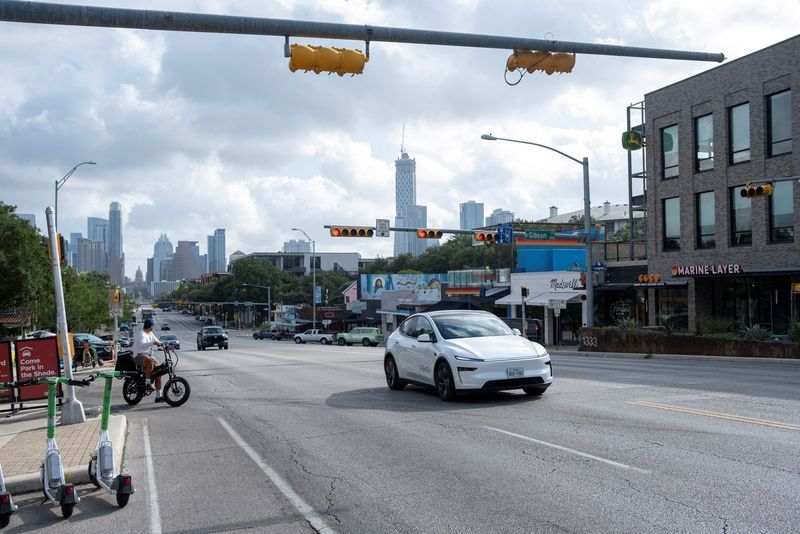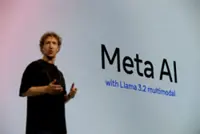
To help slow myopia, Solinsky and Gaffar both suggested the '20-20-20 rule.' — Image by senivpetro on Freepik
Children are developing nearsightedness earlier in life, and while looking too long and too close at phones and tablets may play a role, the answer is not that simple, according to a Connecticut paediatric ophthalmologist in the US.
“We are seeing an increased rate of myopia over the last, I would say, 20 years or so, and it is projected to increase,” said Dr Majida Gaffar, division head of ophthalmology at Connecticut Children’s Medical Center.
“I think at some point there was an article that said it would be about 50% of the population by 2050, so it’s definitely prevalent,” Gaffar said. “It’s definitely something that ophthalmologists and optometrists are looking at to slow the progression.”
Myopia affects about 5% of preschoolers, 9% of school-aged children and 30% of teens, according to healthychildren.org.
While there is no cause for myopia, the formal name for nearsightedness, there are correlations, such as “near work and diet ... environmental factors,” Gaffar said. Also, the child of someone with myopia is more likely to be nearsighted.
“What they’ve chosen to do is decrease the progression, and then some people will recommend decreasing near time, things like video games and iPhones and iPads,” Gaffar said.
“I’ll always tell my patients to limit as much as possible, even though they haven’t really found that those are causing myopia,” she said. “But that is something that in the last 15 years has increased with kids, so it could very well be a possibility.
“I just don’t think they’ve researched it enough just because, in science terms ... iPhone usage for kids hasn’t been that long, iPads and iPhones,” Gaffar said. “So even though iPhones have been there for a while, just with kids using it for games and entertainment and things like that is also relatively new.”
Myopia typically progresses at a rate of 1 to 1.5 diopters a year, Gaffar said, referring to the unit of measurement used in eyeglass prescriptions.
“If we know that the parents have high myopia, so we already know that the child has some familial inheritance patterns, that’ll increase their likelihood of having myopia,” Gaffar said. “What I will recommend to patients, or just start talking about at an earlier age, is how we can decrease the progression so they don’t end up having as much myopia as their parents.”
Say if a parent has a minus-5 or minus-6 eyeglass lens, “and the child is 5 years old and about to start kindergarten already at a minus-3, how do we prevent this child from becoming a minus-6, a minus-8 or more?” Gaffar said.
In order to slow a child’s progression, “there are a lot of things that are out there on the market, but ophthalmologists choose to use eye drops,” such as low-dose atropine eye drops, she said. “There have been a bunch of randomised trials that have proven that these do, in fact, decrease the progression of myopia,” she said.
“And then, most recently, people have started using contact lenses to reduce the progression of myopia,” Gaffar said. “These are contact lenses, just like the soft contact lenses you would normally wear, but they have shown to reduce the myopic progression.”
Doctors don’t totally understand how either the eyedrops or contact lenses work to reduce nearsightedness, she said, although the lenses do alter how light hits the retina.
Myopia is caused by the length of the eye and the shape of the lens in the front of the eye, Gaffar said.
“The longer the eye, the more likely it is to have myopia,” she said. “If you have myopia, you are more likely to have a longer eye. And the lens is also where the refractive power comes from. So the shape of the lens can also cause myopia, astigmatism and all of that.”
While myopia is related to the length of the eye, from the cornea to the retina, astigmatism is related to its shape, Gaffar said.
“The way I would explain it is that the shape of the eye is more like a football than a basketball, but really it’s the curvature of the cornea and the lens ... and other things that could affect it,” she said.
Scarring or abnormalities in the lens can also cause astigmatism, which causes blurry or distorted vision because light bends differently as it enters the eye, she said.
While there is such a thing as pathologic myopia, which would be a prescription of 6 diopters or more, that is not common, Gaffar said.
“When we’re talking about pathologic, we’re talking about the high numbers, the ones with the really long eyes, the ones that have a higher chance of having abnormalities associated with their myopia,” she said.
“Retinal detachment is a big one,” she said. “And so when kids come in with really high myopia, the eye is so long and you can imagine that the retina is a bit stretched out, it can cause thinning of the retina and retinal detachments. So that’s in its own category.”
Most myopia that is related to the increase is non-pathologic “because it’s not related to diseases that this child has or a familial, inherent inheritance pattern, or anything like that,” she said.
While some eye doctors will give young children glasses, Gaffar usually does not.
“I tend to give glasses a little bit later, and that’s only because a 5-, 6-year-old in pre-K, kindergarten doesn’t really need to see 20/20,” she said. “A lot of their world is still right in front of them. If the teacher is doing something, it’s more like circle time. If she’s reading a book, it’s circle time, so it’s not very far away.”
An exception would be if a child has “very high myopia, and I feel like their visual development and learning will be affected,” she said.
Gaffar tends to delay prescribing glasses until a child is about 8, she said, “because that’s when they’re in perhaps second grade and do a lot more distance work. That’s when they’re doing their math and things like that on the smart board. But if a parent is adamant on getting glasses sooner for whatever reason, I will get that too.”
Gaffar said she sees a lot more 5- and 6-year-olds with glasses than she used to. “I’ve been practicing for 15 years, but this is the trend that people that are practicing way before I was have mentioned as well.”
Another practice is to prescribe bifocals or even trifocals “to almost decrease what’s called accommodation, and see if that would decrease the progression,” Gaffar said. “And they didn’t find that it worked very well. Now, some people will swear by it, but it hasn’t really shown to be a great way to reduce progression of myopia when we did trials.”
Another thing researchers have found is that myopia is higher in urban than in rural populations, “because they do more outside work,” Gaffar said.
“Urban population, we’ve got the readers, we’ve got a lot of near work,” she said. “So those are the ones that end up being a little bit more myopic. Everything points to that. ... I haven’t seen any studies on that yet regarding screen time and myopia, but I know it must be coming.”
Dr Alan Solinsky, an ophthalmologist at Hartford Hospital’s Eye Surgery Center, does believe an increase in screen time has contributed to higher rates of myopia.
“Myopia and nearsightedness is occurring more frequently with younger children now that they’re using their iPhones and their iPads and other electronic gadgets,” he said. “They’re reading them for whatever, six hours a day, rather than being outside and playing ball and looking at things far away.”
He said the eye adjusts to the distance range it’s used to, “and sooner or later, they get locked in. This has been actually studied and found for many, many years.”
Solinsky said cultures in which children study for many hours a day have been studied and found to have increased myopia.
“Basically, the more you’re looking up close, whether or not it’s at a book or an electronic device, the more nearsighted you’ll get as a youngster,” he said.
“The eye is just like a camera,” Solinsky said. “The eye has a lens near the front, and that lens, when we’re younger, is very, very moldable. It focuses. It’s flat when it looks at the distance, and it’s very globular when it looks up close.”
If someone is looking up close, “it stays very globular, and it’s not moving as much,” he said. “And also the sclera, which is the covering of the eye and goes around the whole eye like the outer surface of a golf ball, the white part, that starts to elongate as well when it’s subjected to prolonged near tasks.”
Solinsky said the lens’ “natural state” is to look farther away and remain more flat.
To help slow myopia, Solinsky and Gaffar both suggested the “20-20-20 rule.”
“Every 20 minutes, you should get up and look far, look 20 feet away or longer and stretch,” Solinsky said. “It’s good for adults and children. They shouldn’t focus for hours and hours at a time.” – Hartford Courant/Tribune News Service








































